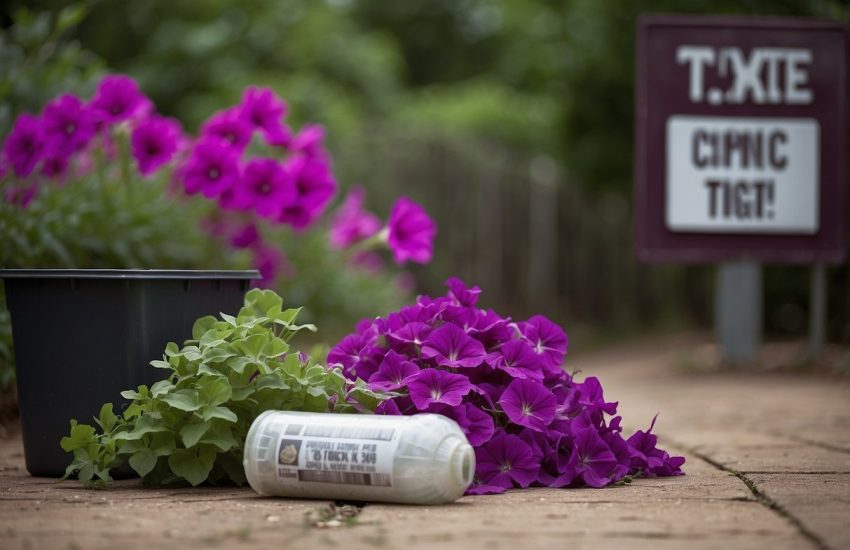Caring for a Cyclamen: Tips and Tricks for Healthy Growth
Cyclamen is a popular indoor plant that is known for its beautiful, vibrant flowers. It is a low-maintenance plant that can be grown both indoors and outdoors. However, caring for a cyclamen requires some attention to detail to ensure that it thrives and produces healthy blooms.

When it comes to caring for a cyclamen, there are a few key things to keep in mind. First, it is important to choose the right location for your plant. Cyclamen prefers cool temperatures and indirect light, so it is best to keep it in a room that is between 50 and 60 degrees Fahrenheit. Additionally, it is important to water the plant carefully, as overwatering can lead to root rot. Finally, fertilizing your cyclamen can help it produce more blooms and stay healthy throughout the growing season.
Whether you are a seasoned gardener or just starting out, caring for a cyclamen can be a rewarding experience. By following a few simple tips, you can help your plant thrive and enjoy its beautiful blooms for years to come.
Fundamentals of Cyclamen Care
Optimal Growing Conditions
Cyclamen plants thrive in cool, moist environments with indirect light. They prefer daytime temperatures between 60 and 68 degrees Fahrenheit and nighttime temperatures between 50 and 60 degrees Fahrenheit. Cyclamen plants should be kept in a shaded area with bright, indirect light.
Soil and Watering Requirements
Cyclamen plants require well-draining, loamy soil that is kept moist but not overwatered. Watering should be done when the soil is dry to the touch, but care should be taken not to overwater the plant. Cyclamen plants should be watered from the bottom to prevent water from getting on the leaves.
Cyclamen Dormancy Care
Cyclamen plants go dormant during the winter months and require different care during this time. The plant should be kept in a cool, bright location with temperatures around 50 degrees Fahrenheit. Watering should be reduced during this time, but the soil should not be allowed to dry out completely. Once the plant begins to show signs of new growth, it can be moved back to its regular growing location and watering can be increased.
Overall, caring for a cyclamen plant requires attention to its light, temperature, soil, and watering needs. By following these guidelines, indoor cyclamen can thrive as a beautiful and low-maintenance houseplant.
Advanced Care and Maintenance
Fertilization and Repotting
Cyclamen plants require proper fertilization and repotting to ensure healthy growth and blooming. One should fertilize the plant with a balanced fertilizer every two weeks during the growing season. It is essential to avoid over-fertilizing, which can lead to root burn and damage. Repotting should be done every two years or when the plant has outgrown its current pot. When repotting, one should use fresh potting soil and a pot that is one size larger than the previous one.
Pest and Disease Management
Cyclamen plants are susceptible to pests and diseases, which can affect their growth and blooming. Common pests that affect cyclamen plants include aphids, spider mites, and thrips. One should regularly inspect the plant for signs of pests and use appropriate measures to control them. Diseases that affect cyclamen plants include botrytis and root rot, which can be caused by overwatering and poor drainage. One should ensure that the plant is not overwatered and has proper drainage to prevent disease.
Propagation and Blooming
Cyclamen plants can be propagated through seeds or by dividing the tuber. Propagation should be done during the blooming season when the plant is actively growing. To propagate through seed, one should collect the seeds and plant them in a seed-starting mix. To propagate through division, one should carefully remove the plant from its pot and divide the tuber into smaller sections. Cyclamen plants typically bloom in the winter and early spring, and one should ensure that the plant is exposed to bright, indirect light to encourage blooming.
Overall, advanced care and maintenance of cyclamen plants require proper fertilization and repotting, pest and disease management, and propagation and blooming. By following these guidelines, one can ensure healthy growth and blooming of their cyclamen plants.

